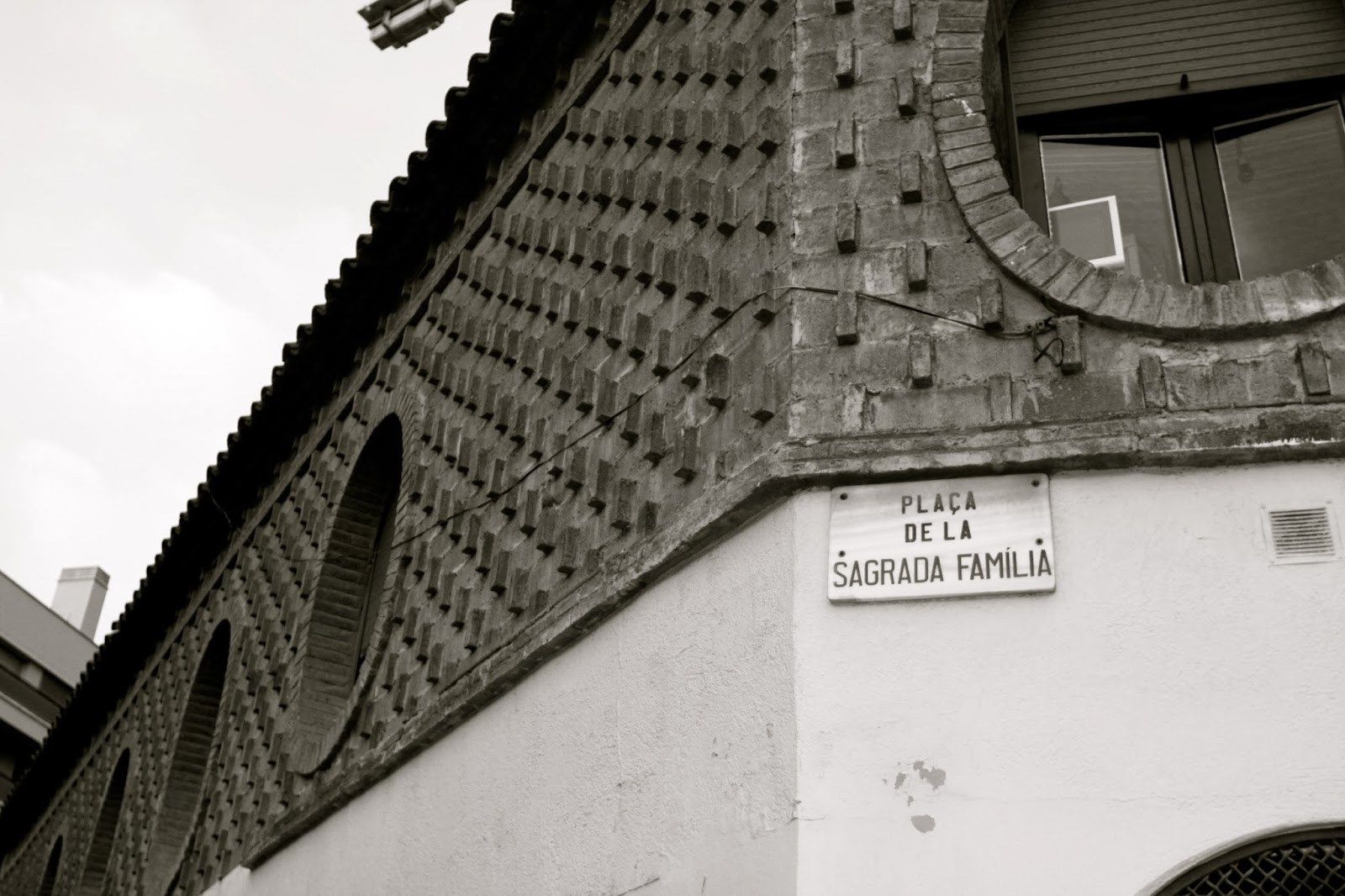My time is Barcelona was a whirlwind of 36 hours. I didn't make it to the hostel until 2am on Saturday (from Paris) and was on a flight at 6am Sunday to Rome. I would best describe Barcelona as beautiful and rowdy. When I arrived in the early morning hours of Saturday the party was just getting started. I can't say I ever got used to the European lifestyle of staying up so late! After catching up on sleep I spend Saturday on a walking tour of the old city. I met some local travelers in the hostel who convinced me I needed to experience a Barcelona club. I went to the club Razzmatazz which consisted of many different levels and rooms with different DJs and bands. It was quite the experience and by the grace of God I still managed to make my 6am flight!
La Rambla
A main street leading to the ocean filled with nick-nack shopping
Random photos from around Barcelona
I enjoyed a sangria on the Mediterranean
A friend of mine who had previously studied abroad in Barcelona recommended that I get a sandwich from Bo de B and it would be the best sandwich of my life... and it was!
Barcelona is the city of the Catalin architect Antoni Gaudí: the figurehead of Catalin Modernism. Gaudí's works reflect his highly individual and distinctive style and are largely concentrated in Barcelona, notably his magnum opus, the Sagrada Família.
Much of Gaudí's work was marked by his big passions in life: architecture, nature, religion. Gaudí studied every detail of his creations, integrating into his architecture a series of crafts in which he was skilled: ceramics, stained glass, wrought ironwork forging and carpentry. He introduced new techniques in the treatment of materials, such as trencadís, made of waste ceramic pieces.
The Sagrada Família is by far one of the most amazing architectural feats I have ever seen. Construction of Sagrada Família had commenced in 1882, Gaudí became involved in 1883, taking over the project and transforming it with his architectural and engineering style, combining Gothic and curvilinear Art Nouveau forms. Gaudí devoted his last years to the project, and at the time of his death at age 73 in 1926 less than a quarter of the project was complete. Sagrada Família's construction progressed slowly, as it relied on private donations and was interrupted by the Spanish Civil War, only to resume intermittent progress in the 1950s. Construction passed the midpoint in 2010 with some of the project's greatest challenges remaining and an anticipated completion date of 2026, the centenary of Gaudí's death. To sum it up, the architectural design by Gaudí was too advanced for his time and it has taken decades for modern technology to catch up.
Sagrada Família
The Front Facade of the Basilica
The Back Facade of the Basilica
My favorite photo!
Sunset light on the Basilica
I stayed at the Kabul Backpackers Hostel located in the Placa Real - quite a lovely sight!
This light fixture is designed by Gaudi
I got to skype my family!
RAZZ MATAZZ Club
A Tour of the Old City / Gothic Quarter
Santa Maria del Pi church which translates to "St. Mary of the Pine tree". The front facade features a large rose window, an exact reconstruction of the original, in 1940 after it was destroyed in the fire of 1936.
Plaça del Pi with a market outside Santa Maria del Pi
Eulalia of Barcelona
Saint Eulalia (c. 290–12 February 303), co-patron saint of Barcelona, was a 13-year-old Roman Christian virgin who suffered martyrdom in Barcelona during the persecution of Christians in the reign of emperor Diocletian. When she refused to recant her Christianity, she was subjected to thirteen tortures equaling the number of years she had been alive. Tortures included being put into a barrel filled with knives and rolled down a hill, cutting off of her breast, crucifixion on an X-shaped cross, and lastly decapitation.
Memorial for Saint Eulalia
The Barcelona Cathedral houses 13 geese to honor each year of the life of Saint Eulalia
The gothic quarter is a maze of very skinny pathways
Bridge over Carrer del Bisbe (Bishop's Road) in Barcelona gothic quarter
Remnants of the old city walls still remain
Cathedral of the Holy Cross and Saint Eulalia (Barcelona Cathedral)
The Temple of Augustus was a Roman temple built during the Imperial Period in Barcelona as a place of worship for Emperor Augustus. The temple was demolished at one point and the ruins were not discovered until the 19th century where the columns were appeared on a construction site.



























































No comments:
Post a Comment